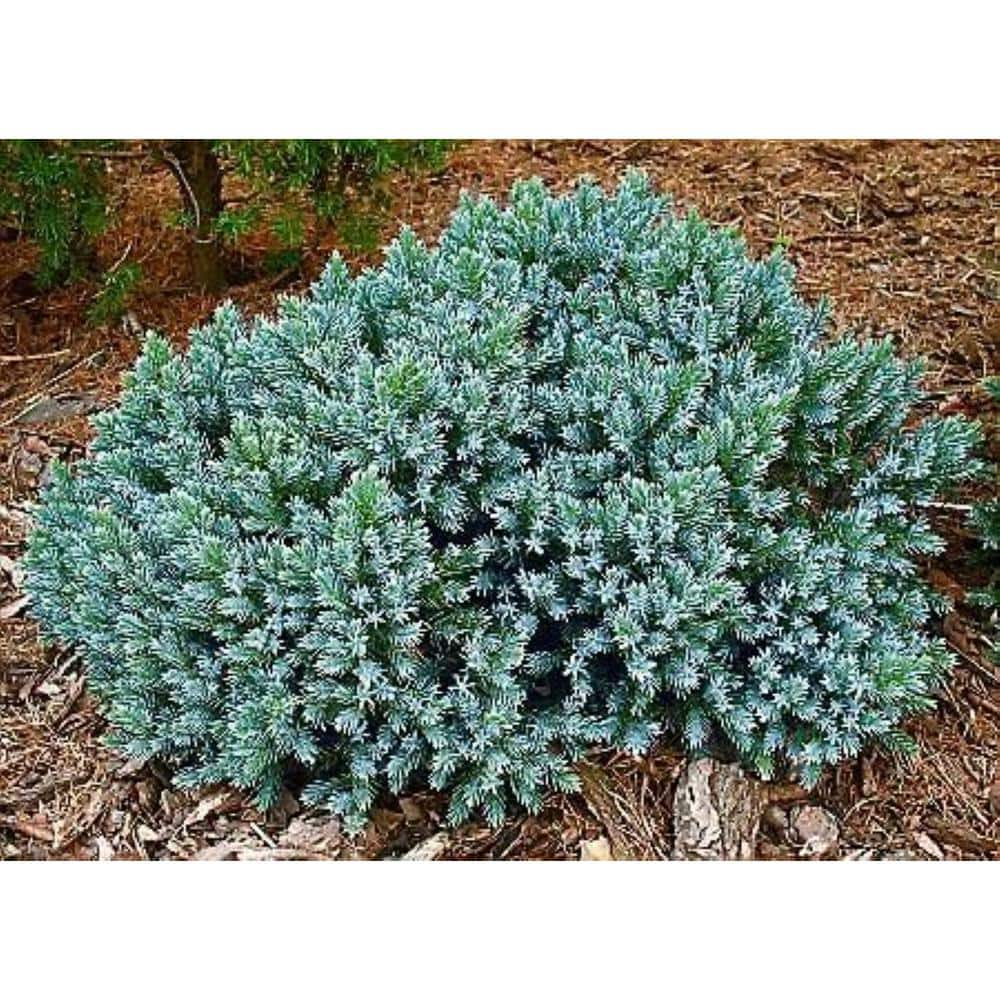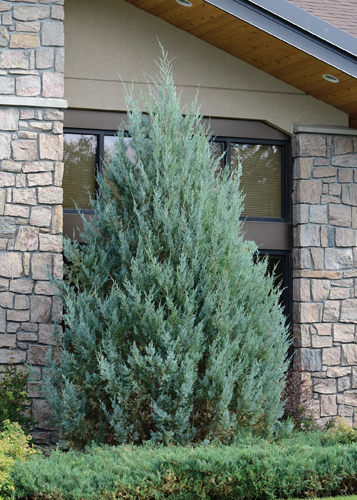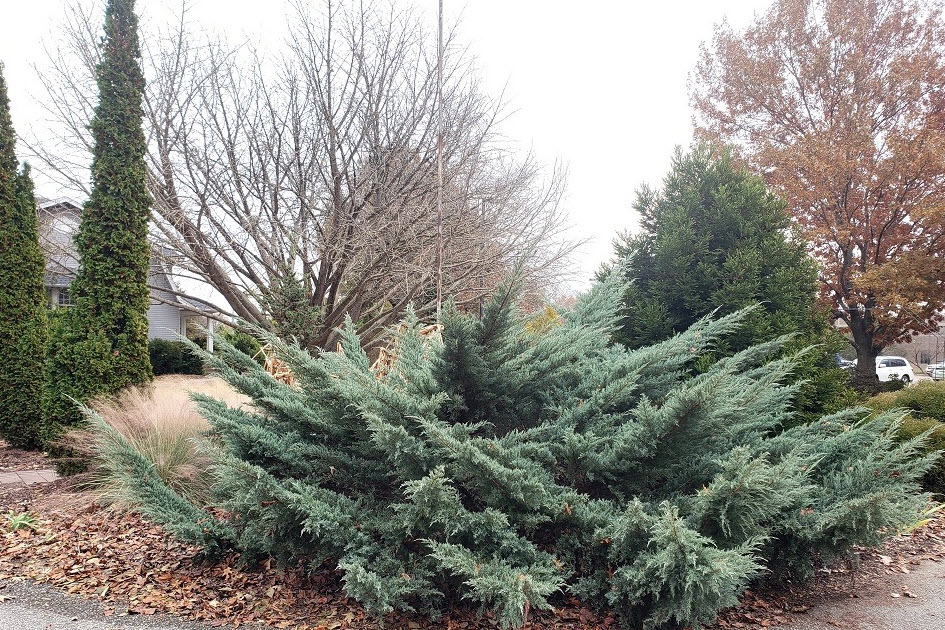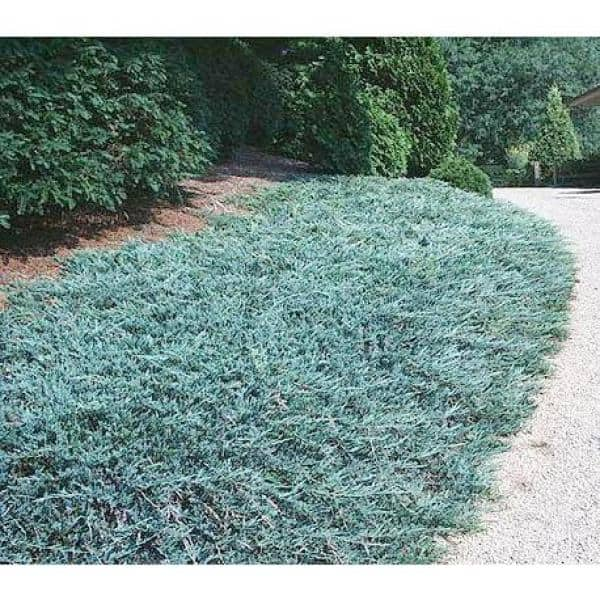The Blue Juniper Shrub: A Stunning Addition To Your Landscape
The Blue Juniper Shrub: A Stunning Addition to Your Landscape
The blue juniper shrub is a beautiful and versatile addition to any landscape. With its silvery-blue needles and mounding shape, it can add a touch of elegance to any garden. Blue junipers are also relatively low-maintenance, making them a great choice for busy homeowners.
In this blog post, we will discuss the following:
- The different types of blue juniper shrubs
- How to plant and care for blue junipers
- The benefits of adding blue junipers to your landscape
Types of Blue Juniper Shrubs
There are many different types of blue juniper shrubs available, each with its own unique characteristics. Some of the most popular types include:
- Blue Star Juniper: This is a dwarf variety that only grows to 2-3 feet tall. It has a mounding shape and silvery-blue needles.

- Wichita Blue Juniper: This variety grows to 6-8 feet tall and has a more upright shape. It has silvery-blue needles that turn a darker blue in the winter.

- Angelica Blue Juniper: This variety grows to 3-5 feet tall and has a loose, spreading shape. It has silvery-blue needles that turn a purplish-blue in the winter.

- Blue Rug Juniper: This is a groundcover variety that only grows to 6 inches tall. It has silvery-blue needles and spreads to 6 feet wide.

Planting and Care for Blue Juniper Shrubs
Blue junipers are relatively easy to plant and care for. They prefer full sun, but can tolerate partial shade. They are also drought-tolerant, once established.
When planting blue junipers, choose a well-drained location. Amend the soil with compost or other organic matter to improve drainage. Space the shrubs 3-4 feet apart.
Water blue junipers deeply once a week during the first year after planting. After that, they should only need to be watered during periods of drought.
Blue junipers do not require a lot of fertilizer. A light application of fertilizer in the spring will help them to thrive.
Benefits of Adding Blue Juniper Shrubs to Your Landscape
Blue junipers offer many benefits to your landscape. They are:
- Beautiful: Blue junipers are a stunning addition to any garden. Their silvery-blue needles add a touch of elegance and color.
- Low-maintenance: Blue junipers are relatively low-maintenance, making them a great choice for busy homeowners. They are drought-tolerant and do not require a lot of fertilizer.
- Diverse: There are many different types of blue juniper shrubs available, each with its own unique characteristics. This makes it easy to find a variety that is perfect for your landscape.
- Versatile: Blue junipers can be used in a variety of ways in the landscape. They can be planted as individual specimens, used as hedges, or added to rock gardens.
- Attract wildlife: Blue junipers attract birds and other wildlife to your garden. The berries are a source of food for birds, and the dense foliage provides shelter.
Conclusion
The blue juniper shrub is a beautiful and versatile addition to any landscape. It is low-maintenance, diverse, and versatile. If you are looking for a stunning addition to your garden, the blue juniper shrub is a great option.
FAQ of blue juniper shrub
1. What is a blue juniper shrub?
A blue juniper shrub is a type of juniper that is characterized by its blue-green foliage. It is a hardy shrub that can be grown in a variety of climates, and it is often used in landscaping for its ornamental value. Blue juniper shrubs can grow to be several feet tall, and they can be either upright or spreading in habit.
2. What are the benefits of growing a blue juniper shrub?
There are many benefits to growing a blue juniper shrub. These shrubs are relatively low-maintenance, and they can tolerate a wide range of soil conditions. They are also drought-tolerant, and they can add a touch of color to any landscape. Blue juniper shrubs can also help to attract wildlife, such as birds and butterflies.
3. How do I care for a blue juniper shrub?
Blue juniper shrubs are relatively easy to care for. They need full sun to partial shade, and they should be watered regularly during the first year after planting. Once established, blue juniper shrubs can tolerate some drought. These shrubs do not need to be fertilized often, but they may benefit from a light application of fertilizer in the spring.
4. What are some common problems with blue juniper shrubs?
The most common problem with blue juniper shrubs is scale insects. Scale insects are small, sap-sucking insects that can cause the leaves of a blue juniper shrub to turn yellow and drop off. Scale insects can be controlled with insecticidal soap or neem oil.
Another common problem with blue juniper shrubs is powdery mildew. Powdery mildew is a fungus that can cause the leaves of a blue juniper shrub to become covered in a white, powdery substance. Powdery mildew can be controlled by watering the shrub regularly and avoiding overhead watering.
5. How do I propagate a blue juniper shrub?
Blue juniper shrubs can be propagated by seed or by cuttings. Seed propagation is the most common method, but it can be slow and unpredictable. Cutting propagation is a more reliable method, but it requires some specialized equipment.
Image of blue juniper shrub
5 different images of "blue juniper shrub" from Pinterest:
This is a popular variety of blue juniper shrub that is known for its compact, conical shape and blue-green foliage. It is a hardy shrub that is drought-tolerant and can be grown in a variety of climates.
This type of juniper shrub is known for its spreading, groundcover habit. It has small, scale-like foliage that is a gray-blue color. Creeping juniper is a low-maintenance shrub that is perfect for rock gardens or borders.
This is a tall, columnar juniper shrub that can grow up to 20 feet tall. It has blue-green foliage that turns a golden bronze color in the fall. Pfitzer juniper is a hardy shrub that can be grown in a variety of climates.
This is a fast-growing juniper shrub that is known for its bright blue foliage. It is a good choice for hedges or screens. Blue Point juniper is a hardy shrub that can be grown in a variety of climates.
This is a low-growing juniper shrub that is known for its spreading habit. It has blue-green foliage that turns a golden bronze color in the fall. Blue Rug juniper is a good choice for rock gardens or borders.
Garden Wiki

Post a Comment for "The Blue Juniper Shrub: A Stunning Addition To Your Landscape"